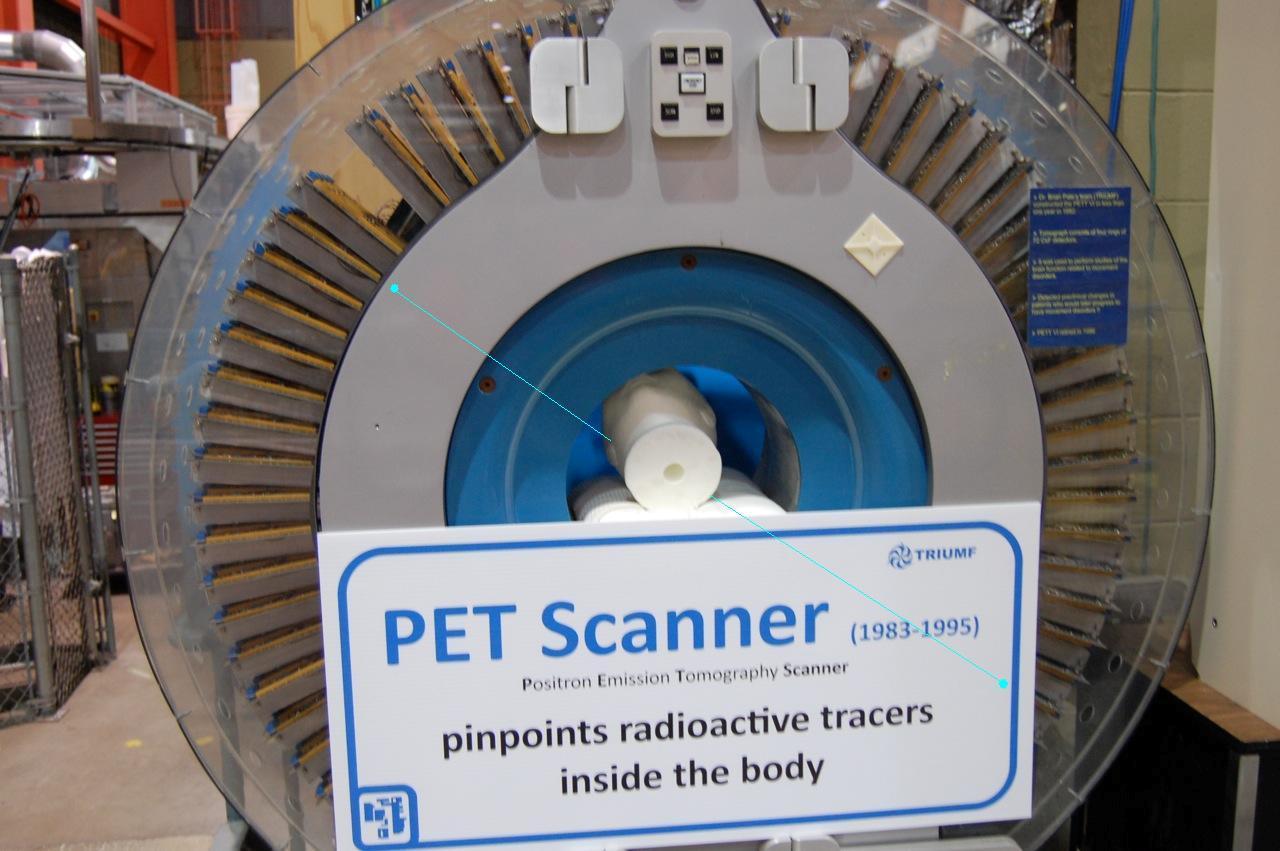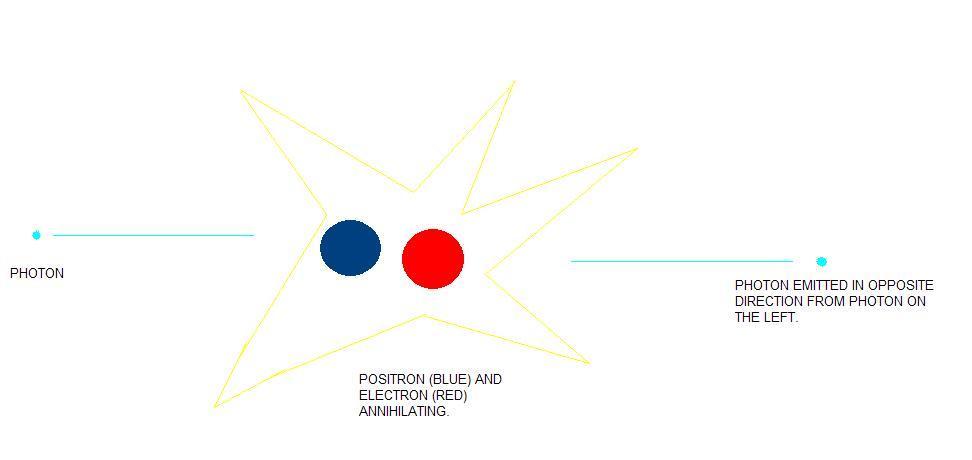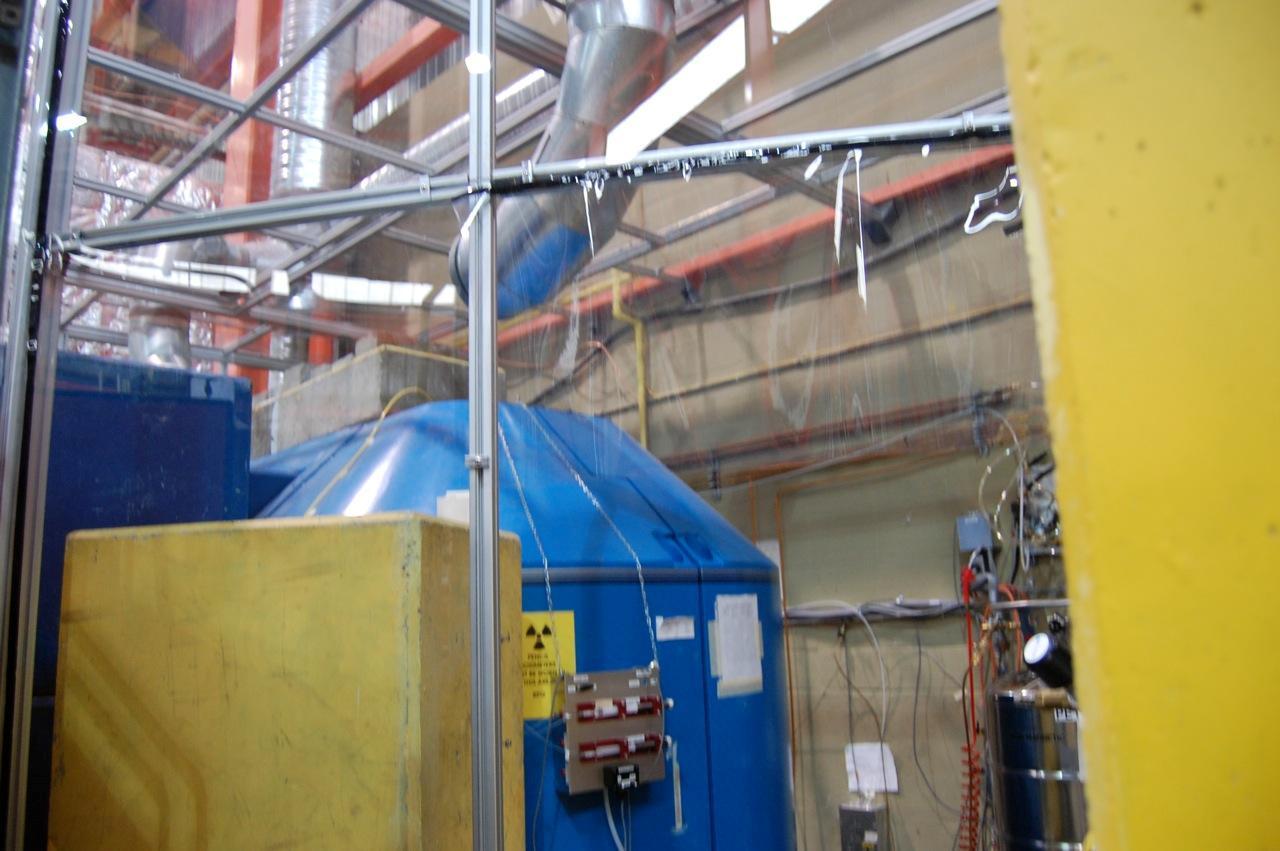Editor's Note: As his summer research experience at TRIUMF comes to an end, the TRIUMF staff would like to thank Dylon Martin for his hard work and dedication to the various groups he has worked with over the last 6 weeks. Thank you Dylon for sharing your reflections and insights with us each week, best of luck with your future endeavours, and have a safe trip home to Winnipeg!
For my last week at TRIUMF I've seen the smallest cyclotron, the TR-13, where particles collide to make medical radioisotopes. Fittingly enough, TR-13 is also where physics collides with medicine, leading to exciting and cutting-edge research. I've also seen yet more friendliness and hospitality from the staff, which summarizes what my entire time here has been like. I'm certainly going to miss TRIUMF and remain intrigued by physics, especially after TR-13 has shown me how wide it's applications are!
Radioisotopes, the product of TR-13, are used in Positron Emission Tomography (PET) scanners. PET scanners are used to measure cell activity in the body (like cells using food). PET scanners can measure cell activity in the whole body or just the brain. Medical scientists use them when studying cancer, Parkinson's disease, Schizophrenia, Depression, and gambling addiction, to name a few.
Radioisotopes are certain atoms that decay (or give away matter as energy). During this decay, a positron (positively charged electron) is given out. The positron quickly comes into contact with an electron and the two particles annihilate (turn into energy) each other, giving off two photons. These photons quickly move away from each other. In PET scanners a circle of detectors detect these two photons and use the information to reconstruct what went on inside the body.
Figure 1: The annihilation of a positron and an electron.
Radioisotopes are produced in a very small cyclotron (TR-13). It works by stripping electrons from a hydrogen atom with a foil and directing the hydrogen proton to the target with magnets. The protons collide with the target particle to produce radioisotopes. Radioisotopes made at the lab include 11C, 18F, and 14N.
Because these radioisotopes are going to be injected into people and have to get into their cells, it's important that they're attached to something the cell eats--glucose. So the various radioisotopes are attached or chemically synthesized with glucose. This process can take anywhere from half an hour to an hour. And because some radioisotopes decay really fast chemists on staff are under a lot of pressure to work quickly yet carefully.
Once done, the radioisotopes are either transported to the British Columbia Cancer Agency (BCCA) by car (which takes about half an hour) or transported to UBC Hospital through a tube system called a "rabbit line" (which takes two minutes). The quicker decaying isotopes (11C and 14N) are sent to UBC hospital, while the slower decaying 18F is sent to BCCA.
I had the pleasure of actually visiting the UBC Hospital and seeing actual PET scanners. Groups using the PET scanners were mainly research groups, trying to find out basic information on diseases like Parkinson's. There was also a miniature PET scanner, used to study mice and rats. All of this was explained to me in a lively discussion with a researcher at UBC Hospital, before I departed.
 | |
Figure 2: An outdated PET scanner. Note the "circle" of | Figure 3: The TR-13 cyclotron (blue) surrounded by |
The people of the TR-13 group were very helpful and kept me busy. Maurice Dodd, the Assistant PET Engineer, had me wire a voltage detector. It took a lot of patience and attention to detail, not to mention thorough note keeping. But Maurice was quite a helpful and very patient teacher. Cornelia Hoehr, the Coordinator, was very helpful at explaining the basics of TR-13 and was friendly enough to offer help with any other difficulties I came across. Valia Barreras Fernandez, the Operator, was a great clarifier, she had an empathetic understanding of exactly where to start and stop her explanations. She enthusiastically answered all my questions with crystal clear answers. Wade English, the Technician, was creative enough to plan an actual trip to UBC Hospital, guessing (correctly) that I would like to go there. This week wouldn't have been a thousandth as great as it was without the people.
The same extends to my time at TRIUMF as a whole. Jim Hanlon extended a helping hand to me this week as I faced difficulties. The cafe staff have been as friendly as ever. Marcello Pavan kindly sorted out accommodation complications, TRIUMF generously treated me for lunch, and the office staff have been helpful, as always. Leaving TRIUMF and Vancouver I am struck by the neighbourly nature of one of Canada's most renowned basic research facilities. I'll certainly miss it.
By: Dylon Martin


